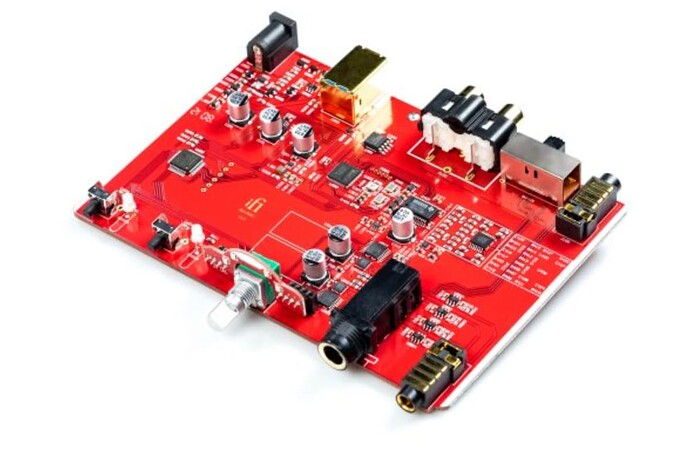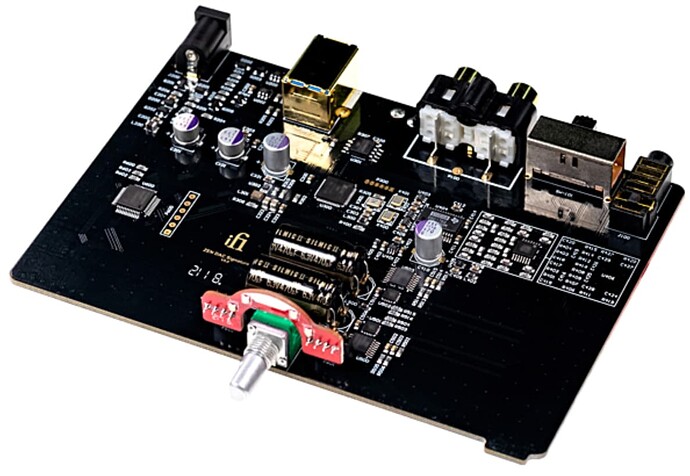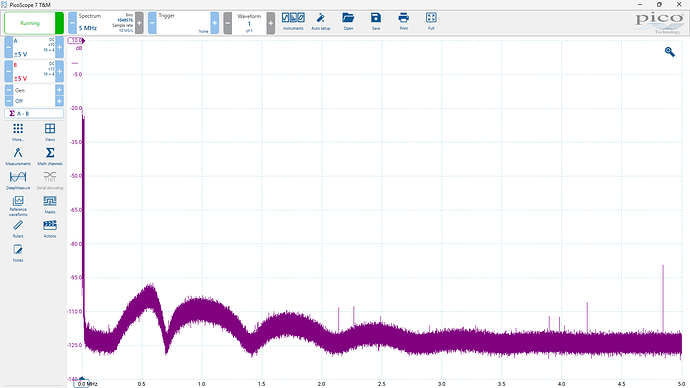Do you mean the foucs for the upcoming measurements or the the difference between v2 and v3? PowerMatch is not new on v3.
The new zen dac v3 updates are mainly focusing on the headphone amp performance with the xbass + boost and other feature. There is nothing wrong with the zen dac v2 to begin with
To me, the main focus for v3 is DSD512 via line out.
Xbass or TrueBass (in v2) are not new to iFi. From what I see, the reviews for these extra bass features are yes and no. So, I don’t care too much about it. Looks to me just another button for us to have some fun.
From the look of the inside between regular and signature versions, it seems some re-capping could be done easily on the regular to make it “better”
Regular:
Signature:
It has been there since the original iFi Zen DAC as I still have that model. I might be interested in an upgrade to the 3 but the Zen Stream maxes out at DSD256 and PCM 384 which I am quite happy with.
Currently I use the Stream with the Zen DAC II Signature Edition for feeding a power amplifier but I will be freeing that equipment up soon so it will be good to get some user feedback.
Does the signature really sound much better? Someone said part of the reason is because of the included power supply.
Did you compare v1 and v2 signature with the same power supply?
The Sig V2 really does sounds excellent, but it is a pure DAC with no headphones amplifier.
I use the DAC v1 as a headphone amplifier, originally with the Stream and now put of a PC with Roon. It does come with a very nice PSU, but I have removed it multiple times and just used the Zen Stream to power it and could hear pretty much no difference (I am running the Stream off an iFi Elite PSU though which might help that).
The Sig 2 with the Zen Stream and HQPlayer and DSD256 has been musical excellence for me.
@jussi_laako my friend bought an SMSL D-6 and wanted me to check/update firmware with the DSD512 fix.
So I pulled out the Picoscope because it’s been a while since I measured a D-6.
This is DSD512 + ASDM7 with the firmware fix - does this look like DSD Direct ?
There’s no way it can be non-Direct?
Yes, it looks correct. It’s the way you’d expect from a multi-element SDM DAC. I guess this is with the lower filter frequency setting.
Well I was naughty because this was a trick question.
That screenshot above is with D-6 running in non-Direct mode with volume 20dB down from max (volume at 40 out of max 60).
If I turn to max 60 the level raises (see below) and the below looks identical to the PrD Direct mode of the D-6… you would not be able to pick it if I showed both here. Identical.
Exactly why I said weeks ago here I cannot trust AKMs because I guarantee from the Pico measurement you wouldn’t be able to pick Direct vs non-Direct…
Even though it looks like Direct WITH volume control ![]()
I had the same experience with RME ADI-2 (AKM) when I had it.
The Apprentice deceiving the Master Jouneyman, not a good path.
Point 1: it looks like DSD Direct (from Jussi)
Point 2: it looks identical to the PrD Direct (aka DSD Direct) mode
Point 1 + Point 2 => D6 looks like DSD Direct at vol 40 and max vol (even with DSD Direct off)?
Based on my understanding of all the previous discussion, Jussi was comparing the result from how the dac handle differently between 44.1k input and dsd256 to tell if it is DSD Direct.
With a single chart, it seems not possible to tell if the DAC is DSD Direct or not.
We cannot trust AKM chip indeed support DSD Direct ? (problem with the AKM chip)
or We cannot trust the DAC makers who claimed they setup the DAC as DSD Direct when Direct mode is on? (problem with the DAC make)
ha it is to prove my point from weeks ago, but my words obviously didn’t get make things clear enough, so I had to resort to measurement
And a good old fashioned blind test
This is a state of emergency for any AKM DAC owners expecting DSD Direct ![]()
iFi and Holo DAC owners can sleep easy tonight ![]()
Yeh but this was not related to my point unfortunately
My point is to compare DSD256/512 input DSD Direct with DSD256/512 non-DSD Direct.
I’m not interested in comparing PCM44.1 - I jump straight to the big cheese comparison, to check if DSD Direct is actually working or broken and to do this, must compare with non-DSD Direct DSD input
Hmm… how can you tell they are indeed DSD Direct? Can you tell it from a single DSD256/512 chart? ![]()
Looks like the reason that they don’t provide a non DSD Direct mode for you to compare actually helps as there is no way to tell (if) they are not Direct.
Of course, I can say I trust them, or I know its design down to individual resistor level and I can guarantee they are indeed DSD Direct, …
But, just a but,… if someone ask you to show by measurements they are indeed DSD Direct. Do you think it is possible? ![]()
![]()
Well Jussi believed the above looked like DSD Direct - even though it was 20dB below the DAC’s max volume, i.e. DAC volume control with DSD input
And this is not just Jussi - if someone showed me that plot, I would agree that is DSD Direct. It absolutely looks like it. He answered exactly the way I would.
But it is clearly NOT DSD Direct with the DAC volume control enabled and down 20dB from max…
So, I read it as a simple answer “no”.
i.e. there is no way to verify by direct measurements that a DAC is DSD Direct. It is always a best-effort.
No I didn’t say “no”… deliberately because one first needs to understand the measurements and what to look for.
Its too much to type but if you go read Audiophile Style forum and search Jussi’s posts from the past 10+ years there, you will at least reach my ‘Apprentice’ level ![]() that’s actually how I learnt by the way…
that’s actually how I learnt by the way…
If DSD input Direct vs non-Direct looks quite different, at least you can say the Direct pathway is indeed different and if it looks like it should, then you can be confident.
But here non-Direct looks like Direct … even with DAC 20dB volume attenuation, other than lower level and different hump shapes but still Direct-looking…
It is complicated. I know you are looking for a generalisation, but you cannot
Exactly, you need non-Direct mode from the DAC to help you to verify it’s Direct mode is different. Moreover, Direct mode being different from non-Direct mode does not indicate it is 100% DSD Direct.
So, my challenge here is that:
if you are given a black box DAC and it claims it does DSD Direct (and it’s the only mode it support). Do you think you can verifiy its claim independently with measurements? ![]()
![]()



